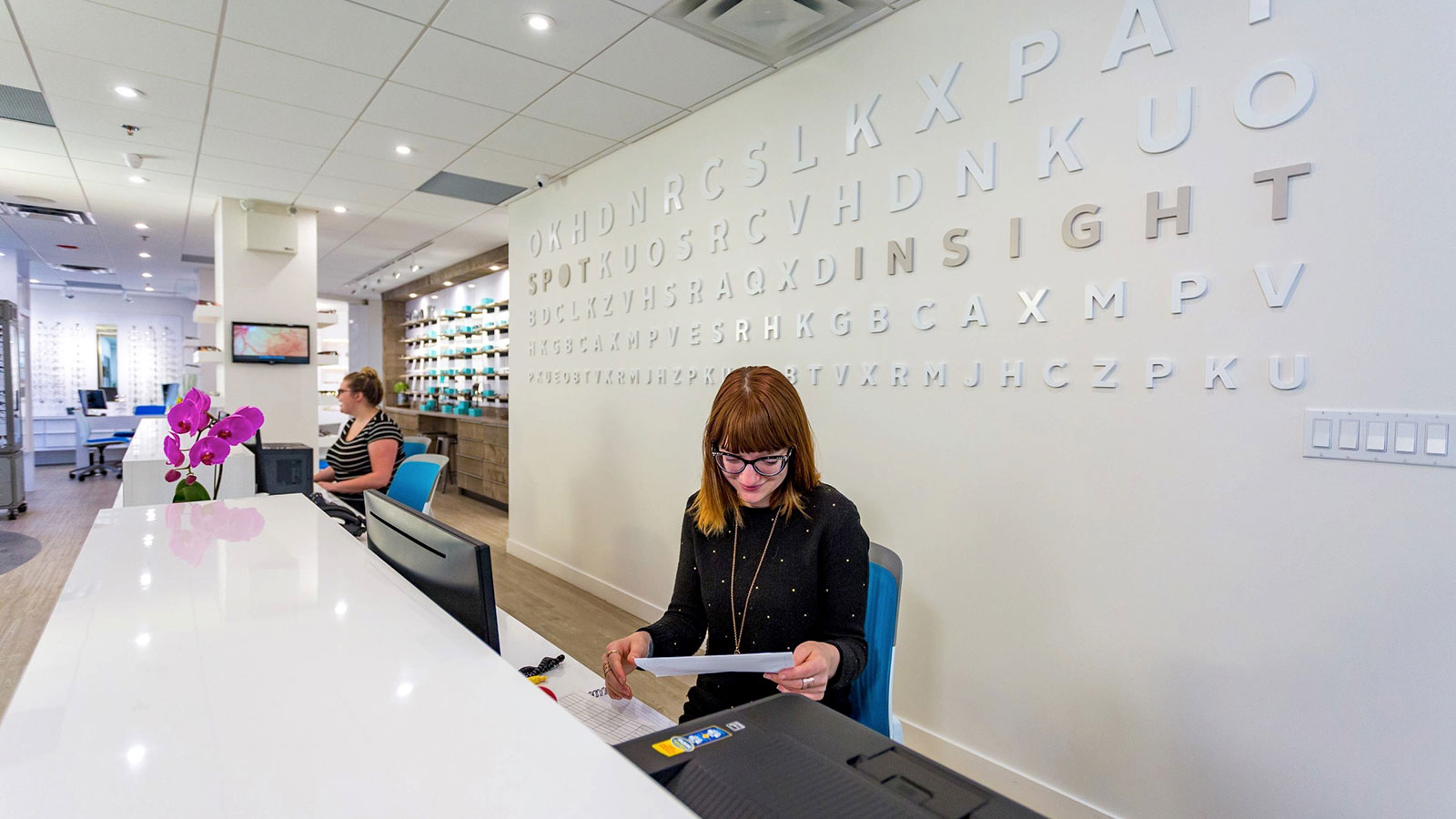
Engaging Young Associates to Partner Up
Dr. Paul Gray, Insight Optometry
Selling Parts of Your Business
Dr. Paul Gray’s OD journey started in 1981 in Halifax, Nova Scotia, where he and a classmate took over an existing optometric practice. He had recently graduated from the University of Waterloo as a Doctor of Optometry. Previously a hospital-oriented ophthalmology city, the duo decided to make their mark downtown. Forty years later, with several expansions and a relocation under its belt, Insight Optometry now houses seven optometrists, 27 staff members and six licenced opticians.
Dr. Gray sold his last share in the clinic in January 2020 to become an associate. This allowed him to focus on patient care and leave the management responsibilities to his colleagues.
“Our clinic has always been about reducing our ownership over the years. With one or two associates usually working with us, we consistently tried to identify those we would want to partner with in the longer term. The objective was to bring these optometrists on board and keep them from leaving and becoming our competitors because we were not sufficiently receptive to their needs,” explains Dr. Gray.
“At one point, I was a 50% owner, and then I was a 1/3 owner, and then moved to be a 1/4 owner and so forth. When it came time to step away, it was just the continuation of a process we had already put in place. There were always people internally who recognized the opportunities of independent clinic ownership and we have tried to involve them very early in their careers in some of the decisions that we were making,” says Dr. Gray.

The clinic’s practice philosophy invited new OD’s to join and encouraged them to stay there.
“It necessitated on our part that we offer them a piece of the business to further engage them. Usually, they were with us for a year or two, at which point we would start to float those trial balloons to see if they were interested in becoming a partner,” he says. Interest from the associate led to his gradual introduction to a partnership role, discussions about financials and management of different clinic areas.
“The negative aspect is that you may give up profits as a senior OD. Our thought was always that if they have been with us for two years and they leave, they take half of their patient base with them and open up four blocks from us, now making them a competitor,” shares Dr. Gray.
“Each time, you withdraw some equity from the practice, but at the same time, your practice has grown. So, the next time you elect to sell your practice there is as much equity there as when you sold earlier because the practice grew during that time.”
Although Dr. Gray still enjoys the patient care aspect of optometry, he knew it was time to sell when he started losing interest in its management. “You cannot expect a colleague to take on those management responsibilities. They would want and need a piece of the clinic for them to put time into it. I also think that putting my clinic in a situation where I knew I would have a place to work after I was no longer an owner was important,” explains Dr. Gray
When it comes to selling a practice, every situation is unique. However, it is advisable to facilitate a transparent relationship with your bank, lawyers, and accountants.
“I think hammering some basic understanding is very helpful in getting a handle on the dollars being spent for the purchase,” says Dr. Gray. “For example, for what amount and what percentage of the practice are you willing to sell, and what is the shareholders’ agreement between the current partners? You need to share the agreement with the new buyer, so he can have a careful look at the arrangements that govern the relationship between the original owners and see if it needs to be amended.”
Dr. Gray mentions that there may be some delays from a professional perspective when dealing with lawyers and banks. “I would say that banks have come to us with open arms, especially if they are competing for the opportunity to be part of this deal,” he states. His accountant was secondary to long-term relationships since the inception of the practice.
Preparing the Clinic to Welcome a New Partner
In 2015, Insight Optometry came to the realization that the clinic had outgrown its current location. To continue succession planning, the need for additional space became evident to offer enough resources and capacity to facilitate the schedules of several optometrists.
When it came to the valuation of the clinic, Dr. Gray’s team used a variety of formulas to agree on a number. “We used a variety of formulas based on nets, gross, assets, and in the end, we elected to get an outside consultant,” Dr. Gray explains. “He carried out the evaluation based on many of the usual factors, including location, growth curve, the longevity of staff, EMR system, referral patterns, market value in the city, dollars per patient, and loyalty. Ultimately, you can only sell your practice for what someone can afford to pay for it.”

He stresses that the optometrist joining as a partner needs to remain financially comfortable while at the same time paying you for your shares. It is important to keep emotions out of the equation when it comes to the evaluation of your clinic.
“The new OD needs to make a decent living while buying an asset, and ideally, their first year is the worst. As they get further established within the next three years and the clinic grows, their personal income grows, and that payment becomes less of a challenge for them,” says Dr. Gray.
Dr. Gray encourages giving the new OD the option to keep the existing owner at the clinic for a period of time to ensure continuity with patients and to support the transition. “I want to ensure my patients remain at the clinic. Preparing them for the new buyer will increase success. If you’re helping finance the clinic, you want to ensure that it remains successful so they can continue to pay you,” states Dr. Gray.
“Our clinic used to be named based on the OD’s name. We made a careful decision years ago to rebrand to Insight Optometry. Part of the reason was that we understood Paul Gray would not be around forever. We wanted the patients to relate more to the clinic than to the OD,” indicates Dr. Gray.
Staff decisions have also been part of the clinic’s success story. “Some of our decisions included floating the idea with our staff, for example, asking: What would you think if the new OD was to become a partner? Their input is valuable; there may be aspects of this potential partner that you haven’t seen,” says Dr. Gray.
Finally, Dr. Gray encourages you to prepare early: “Identify and develop a five or ten-year plan. Write it down and make decisions along the path to help support this plan. It may just be a series of small decisions that lead you to this point, but you will see every equipment purchase, employment contract, lease arrangement, bank loan and so forth in a new light if succession planning is top of mind. You will be halfway there before you know it.”